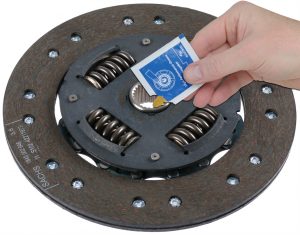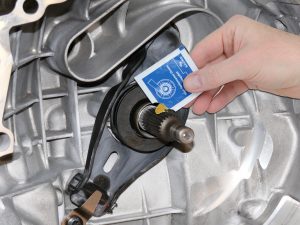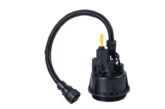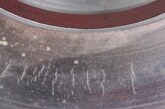Ian Gaskell, Product Support Technician at ZF Services UK, outlines best practice for hub spline greasing and highlights some of the errors that should be avoided.
Greasing the hub and spline may seem a relatively small task in overall clutch installation, but it is one which plays a critical role in preventing the clutch disc binding to the shaft; an issue that can result in poor clutch disengagement.
Whilst commercial vehicle (CV) technicians will be highly trained in clutch replacements, we are all prone to making small mistakes and this can lead to clutch issues later down the line. Overlooking hub spline greasing may not seem a big issue, but it can result in the build-up of debris, causing the clutch disc to bind with the shaft. This means that when the clutch is released, it may not disengage from the flywheel properly, increasing contact time, friction, and in many cases, damaging the clutch. By greasing the spline every time a clutch is replaced, technicians can create a freely moving and properly working actuation system, ensuring flawless clutch operation.
Avoiding copper-based grease
Even when CV technicians do grease the hub and spline when installing a new clutch, it can be easy to make mistakes. For example, some workshops have been known to use copper-based grease on the hub spline, which can cause clutch judder and slip. Though widely available in most CV workshops, copper-based grease is an assembly grease, designed for use on bolt threads, rather than spline greasing. As such, it has a significantly lower melting point than grease that has been designed with hub splines in mind. When exposed to high temperatures, copper-based grease quickly liquefies and can leak into the clutch friction plate post-installation. Whenever any grease reaches the friction plate, clutch performance is often compromised and in some cases, it may need to be replaced.
This demonstrates why it is so important for CV technicians to use the right type of grease for the clutch being installed. When installing a SACHS clutch from ZF, the right type of grease will be included with the component. SACHS grease has been specially designed and manufactured to accommodate high temperatures, repel clutch dust, and provide high levels of lubrication. Using any grease, other than that which has been specified by the clutch manufacturer, can be risky because it may lack the required stability and surface-load bearing capacity, or may thicken too quickly, becoming gummy.
Using too much grease
When using the grease supplied by the clutch manufacturer, it is essential that only the correct volume of grease is applied. For commercial vehicles, you will require more grease than passenger cars. The amount required will be indicated by the manufacturer. It can be tempting to use all the grease supplied on the hub spline without wiping off any excess.
If too much grease is applied, the centrifugal force will push it out onto the friction surfaces during operation. This can result in grabbing of the clutch during drive-off and clutch slip in operation.
Technicians are advised to smear the grease evenly around the splines on the driven plate and shaft of the gearbox, run the driven plate up and down the shaft, and then wipe clean the excess.
Remember, the volume of grease indicated by the manufacturer is enough to last the lifetime of the clutch. It is a good idea to use a small brush to make sure that the grease reaches all parts of the spline. An old toothbrush is ideal for this.
Take your time
Even when the hub spline is greased correctly, clutch issues can still be caused when rushing installation. Whilst it may be quicker to use an air gun to tighten the clutch cover bolts rather than a ratchet or torque wrench, this can lead to overtightening. This forces the clutch into the flywheel, bending the cover and pushing it out of balance. As a result, higher vibrations are created from the clutch during vehicle operation. Not supporting the gearbox, or misaligning the engine and gearbox, can also cause clutch judder.
It is always beneficial to take your time replacing a clutch, rather than rushing a job, making small mistakes, and having to carry out additional repairs when the vehicle is returned. Technicians are also advised to invest time in refresher training courses to ensure they continue to stay up-to-date with best practice. After all, sometimes the most costly mistakes are the most preventable.










